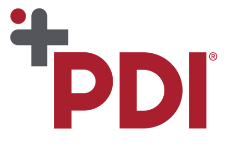Interventional Care


We notice that you are visiting us from . This site only services US-based visitors. Would you like to visit the site that is appropriate for your location?
We are here to support you every step of the way!
What is a Master Label?
The Master Label contains all of the approved uses for a given pesticide product and all associated labeling. Master Labels must be submitted for EPA approval. EPA-approved Master Labels are stamped “ACCEPTED” and placed in the official record. Labeling for a given product must not contain any text beyond that which is approved in the Master Label, except for supplemental labeling. The Master Label provides critical information about how to handle and use the pesticide product.
What important information can be found on the Master Label?
Can Sani-HyPerCide Spray be used with an Electrostatic Sprayer?
Yes, Sani-HyPerCide Spray can be used with an Electrostatic Sprayer on hard, nonporous surfaces only. The ability to use Sani-HyPerCide Spray with an Electrostatic Sprayer can be especially useful in Environmental Services.
Does Sani-HyPerCide Disinfectant have a Biofilm Bacteria kill claim?
Yes, Sani-HyPerCide Spray has a Biofilm Bacteria kill claim for S. aureus and P. aeruginosa at 3 minutes. Sani-HyPerCide Spray is useful for targeting these specific organisms in areas such as sinks and drains where biofilm is known to build up. Sani-HyPerCide Wipe does not have a Biofilm Bacteria kill claim.
How harmful are the ESKAPE pathogens in respect to Healthcare Associated Infections (HAIs)?
The ESKAPE pathogens are responsible for over 40% of HAIs in the healthcare environment1,2.
1. Magill, et.al. Multistate Point-Prevalence Survey of Health Care–Associated Infections, N Engl J Med 2014;370:1198-208
2. Boucher, et.al. Bad Bugs, No Drugs: No ESKAPE! An Update from the Infectious Diseases Society of America, Clinical Infectious Diseases 2009; 48:1–12
What are the ESKAPE pathogens?
The acronym ESKAPE includes six epidemiologically important pathogens that exhibit multidrug resistance and virulence: Enterococcus faecium, Staphylococcus aureus, Klebsiella pneumoniae, Acinetobacter baumannii, Pseudomonas aeruginosa, and Enterobacter species.
Do PDI Germicidal Wipes contain any ingredient listed as carcinogenic?
PDI disinfectants DO NOT contain any ingredients listed as carcinogenic by the National Toxicology Program (NTP), American Conference of Governmental Industrial Hygienists (ACGIH), and Occupational Safety and Health Administration (OSHA). This applies to ALL Sani-Cloth products, including Sani-HyPerCide, Sani-Cloth Prime, Super Sani-Cloth, Sani-Cloth AF3, Sani-Cloth Bleach, and Sani-Cloth Plus brands. To register any disinfectant product with the US Environmental Protection Agency (EPA), the manufacturer is required to provide the EPA with the product’s manufacturing process, active and inactive ingredients, efficacy, chemistry, toxicity, and information about relevant impurities. The EPA conducts a thorough review of these materials and product ingredients. The agency would not register any product if it contained carcinogens without requiring relevant label warnings (40 CFR 156.10(g)(7)). As such, Sani-Cloth Wipes do not contain carcinogenic label warnings.
Can PDI Germicidal Wipes be used on toys?
PDI disinfectants are available in EPA-Registered formulations that are approved and labeled for use on hard, non-porous toys. The products clean and disinfect in a one-step process, unless visibly soiled. Once disinfected, toys should be rinsed with potable water (tap water) to remove any residue and allowed to air dry. According to the Association for Professionals in Infection Control and Epidemiology (APIC), the recommended procedure for disinfecting toys is “Toys should be cleaned/disinfected between patients, especially those that are visibly soiled, mouthed, or used by patients in isolation. Toys should be washed thoroughly; disinfected with a non-toxic, low-level disinfectant, and air-dried completely.” Infection control experts recommend only washable toys for sharing. Stuffed animals and toys that cannot be cleaned and disinfected should not be shared.
SOURCE: APIC Text of Infection Control and Epidemiology, Chapter 39, p. 14-15, Association for Professionals in Infection Control and Epidemiology, 2011. www.apic.org
Is Sani-HyPerCide® Germicidal Disinfectants a Sporicidal formulation?
Yes. Sani-HyPerCide® is the first ready-to-use Hydrogen Peroxide formula that is effective against Clostridioides difficile.
What personal protective equipment (PPE) is required when using Sani-HyPerCide™ Germicidal Wipes?
For all PDI products, according to the label instruction, the use of gloves or other PPE is not required to handle the product, particularly in non-clinical settings. Therefore, the routine use of PPE is not required unless potentially infectious blood or bodily fluids are present. If bloodborne pathogens are present, such as HIV, HBV, and HCV, follow label instructions. You should, however, wear PPE as appropriate in accordance with your facility protocol. Also, in compliance with good industrial and health hygiene, you should wear gloves when cleaning and disinfecting in a patient setting.